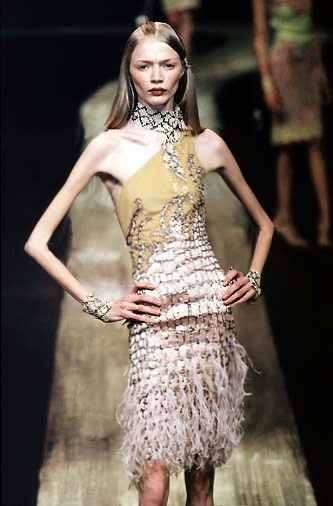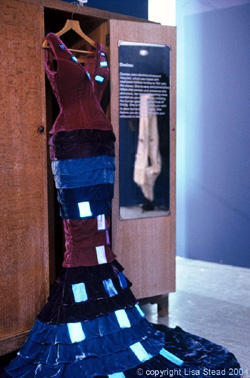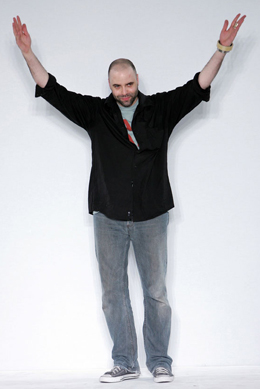 £100 less in America
£100 less in AmericaFor years I have been taking advantage of the weakness of the dollar to buy clothes when I'm in the US, and first port of call was always
Banana Republic, cruelly denied to us Brits, and a favourite for well-priced fashion we couldn't get at home. I loved the 5th Avenue flagship store in New York and my wardrobe has several good things that have done service for years on end.
So we've all been drumming our fingers on the table waiting for its first European outlet to open in the old Dickens and Jones building on Regent Street, and lo, yesterday, it did. And as I had an hour-long gap between lunch with my agent and afternoon tea with a fashion editor at Liberty, I hurried in there out of the driving rain and bitter winds.
What a let-down. Maybe it's a question of forbidden fruit, you want what you can't have, but overall the stock was disappointing: Marks and Spencer's Limited Collection without any of the edge. And more expensive. They've introduced a UK only label which is supposed to be a bit more
dernier cri, and there was a very nice white trench coat I tried on, but I'm not in the market for a white trench coat. The bags were okay, a very limited collection of shoes, some jewellery including one sensational yellow bead necklace, very this season. A good, Spring-weight leather coat at £300. But across the street is
Cos and you could actually look out of BN's window's into it and see clothes that are more stylish, more European, more interesting - and it's owned by H&M.
According to the Daily Mail, BN is '
imposing huge mark-ups' on its UK prices:
A snapshot survey of Banana Republic's UK prices by the Daily Mail shows a printed silk halterneck dress sells for £95 in this country - 58 per cent more than in the U.S.
It can be teamed with a £125 Flatsunglasses-iron baby satchel, which is 40 per cent more, and a pair of espadrille wedge shoes that are 62 per cent more expensive here.
The entire outfit would cost £299.50 in the UK, £100 more expensive than the same items in the U.S.
An orange, textured coat appears on the firm's U.S. website at a price of just £60, while the figure in the official UK catalogue is £140 - a mark-up of 133 per cent.
A cap sleeve silk dress in pale gold is £55 on the other side of the Atlantic but £95 here.
A pair of black peep-toe wedge shoes is £79.50 in this country, a mark-up of 62 per cent on the U.S. price.
There is a similar mark-up on some accessories.
The fashion editor remarked that one problem with BN is its colours, which are probably better suited to the stronger light of America. I also had an impression that the sizing is smaller, as I usually go a size down in BN in America, but not here.
So I dropped in at the Jaeger press office for a cup of tea and they showed me some things that are coming in at the end of April, and I saved my money for those, instead.
 One of the laziest and most complacent slogans is, If voting changed anything it would be illegal.
One of the laziest and most complacent slogans is, If voting changed anything it would be illegal.










































